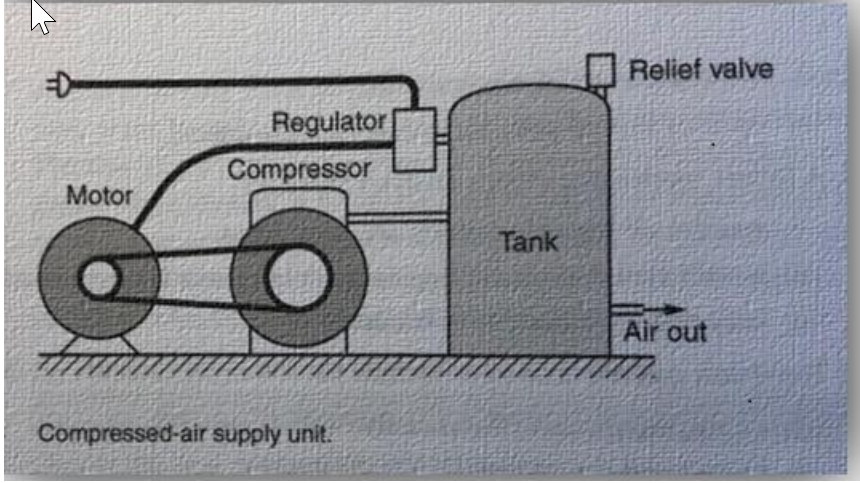Suppose that you have designed a portable compressed-air supply system, as shown in the figure below, for filling scuba tanks and for driving pneumatics tools in garages and factories. The system consists of an electric motor, an air compressor, an air tank, a regulator and a pressure-relief safety valve. The regulator contains a pressure sensor connected to a power switch. The motor is switched on when the tank pressure drops bellow a fixed value and off at a slightly higher pressure. The pressure-relief valve is set to open at a higher pressure than the regulator motor off-pressure. Explosion of the tank is clearly a dangerous hazard. Three events are assumed to possibly lead to a tank explosion: 1. an internal tank defect such as poor welding 2. an external cause such as a plant vehicle colliding with the tank 3. Excess pressure in the tank. The excess pressure can occur only if both the control unit and the pressure-relief valve fail: The pressure sensor might fail to shut oof the motor because of switch failure or human error, such as setting the switch incorrectly or propping it open. The pressure-relief valve might fail to pen because of the mechanical valve failure or human error, such as incorrectly setting the valve or locking it shut. Construct the fault tree for the system described above. Explosion of the air tank is the top event.
Suppose that you have designed a portable compressed-air supply system, as shown in the figure below,
for filling scuba tanks and for driving pneumatics tools in garages and factories.
The system consists of an electric motor, an air compressor, an air tank, a regulator and a pressure-relief
safety valve.
The regulator contains a pressure sensor connected to a power switch. The motor is switched on when
the tank pressure drops bellow a fixed value and off at a slightly higher pressure. The pressure-relief
valve is set to open at a higher pressure than the regulator motor off-pressure.
Explosion of the tank is clearly a dangerous hazard. Three events are assumed to possibly lead to a tank
explosion:
1. an internal tank defect such as poor welding
2. an external cause such as a plant vehicle colliding with the tank
3. Excess pressure in the tank. The excess pressure can occur only if both the control unit and the
pressure-relief valve fail:
The pressure sensor might fail to shut oof the motor because of switch failure or human error, such as
setting the switch incorrectly or propping it open.
The pressure-relief valve might fail to pen because of the
as incorrectly setting the valve or locking it shut.
Construct the fault tree for the system described above. Explosion of the air tank is the top event.

Trending now
This is a popular solution!
Step by step
Solved in 2 steps with 2 images




